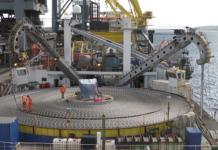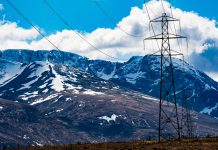 Sponsored: ABB technology strategy manager Peter Jones outlines how the power grid is changing and what that means for large companies in terms of the way they interact with their distribution network operators.
Sponsored: ABB technology strategy manager Peter Jones outlines how the power grid is changing and what that means for large companies in terms of the way they interact with their distribution network operators.
These are interesting times for our distribution networks. They are set for some profound changes as they evolve from their historic passive model in which electricity flowed in just one direction from producer to consumer via overhead lines, cables and substations.
Distribution networks now have to cope with the complex 21st century world of distributed generation, renewable energy resources, smart meters, electric vehicles, heat pumps, energy storage, microgrids and demand response mechanisms. This complexity requires active system management to integrate the many different points of supply and consumption and to control the multi-directional flows of electricity between them, as well as interfacing with the wider grid.
The situation is summarized very well in a number of recent documents published by some of the UK’s Distribution Network Operators (DNOs). They portray a vision for the evolution of the energy sector towards a smarter system that can only be made possible if DNOs embrace the modern technologies and operating principles that will ensure effective coordination between all the producers and consumers they serve. Effectively, the current role of the DNO will be extended to that of a Distribution System Operator (DSO).
Embracing modern technology will enable the DSO to build a flexible network capable of managing the flow of electricity at many different points to deliver enhanced security and quality of supply, along with improved energy efficiency and reduced costs.
Flexible power links
One Ofgem funded innovation that offers particular promise for this new DSO model is the creation of flexible power links based on a back-to-back power electronic converter (AC–DC–AC) solution. They will allow power transfer across two previously incompatible distribution grid groups, which will help balance generation and demand locally, while also unlocking additional capacity under both normal and abnormal network conditions.
This approach will be both quicker and at a significantly lower financial and environmental cost than the traditional reinforcement method of building new connections from each distribution grid back to the nearest substation. And it is estimated that deploying such flexible power links across the UK would alone release 1.5 GW of capacity by 2050.
Line voltage regulation eases integration of renewables
Increasingly, DSOs have to handle the growth of decentralised renewable schemes that feed into the local distribution grid at many different points. Our traditional grids are designed on the basis that there will be a voltage drop along the distribution line from the transformer to the consumer. But now they can experience voltage rises near the power producers. Should the distributed generation be higher than the load power, the voltage rise can be very pronounced and exceed the statutory voltage limits. This can result in curtailment as the DSO will limit the amount of power that can be injected into its grid to maintain stability and voltage. In some cases, the DSO might have to refuse to make a new connection since the maximum infeed voltage would rise above the permitted voltage band, even though the thermal load on the cables would be acceptable.
There is now a ready answer to this problem in the form of line voltage regulators (LVRs) that effectively ‘recalibrate’ the voltage to keep it within the allowed range across the whole distribution network. An LVR can be installed at any location on the medium voltage or low voltage grid. It can regulate the voltage on a single feeder or a bus with several feeders. When one feeder has a large amount of infeed from generators, an LVR can decouple it from the rest of the network so that the DSO can still accept the incoming power without exceeding voltage limits.
Interoperability
Creating this new DSO vision will require the interoperability of many different types of equipment – metering, switchgear, transformers, LVRs and so on. However, the key enabling technologies are already commercially available and on trial in a number of networks. But there is a crucial factor in addition to interoperability, and that is in establi shing the monitoring, control and communication systems that will integrate them within an over-arching actively managed network.
shing the monitoring, control and communication systems that will integrate them within an over-arching actively managed network.
The potential benefits of the DSO model are huge. Just one example is to enable the aggregation of resources dispersed across the network so that they can operate as virtual power plants (VPPs) to facilitate both local balancing of supply and demand, as well as offering balancing services at the distribution/transmission system interface.
For distribution networks the future may no longer be just about putting more wires in the ground. It is going to be more about a process of evolution to help existing infrastructure to work harder, smarter and with greater flexibility.
Related stories:
ABB touts smartgrid and large-scale battery knowhow
A virtual solution for our real flexibility challenges?
Innovative connections for a flexible energy future
Industrial supply issues bring a new relevance to power factor correction
Click here to see if you qualify for a free subscription to the print magazine, or to renew.
Follow us at @mcriticalpower. For regular bulletins, sign up for the free newsletter.



